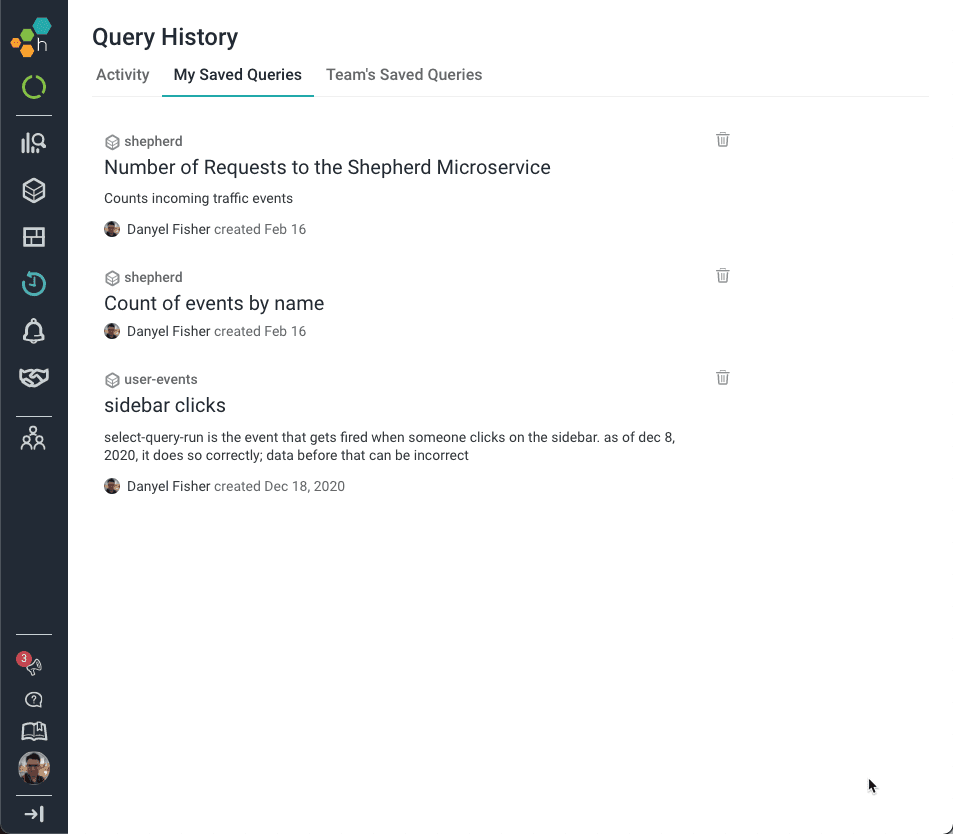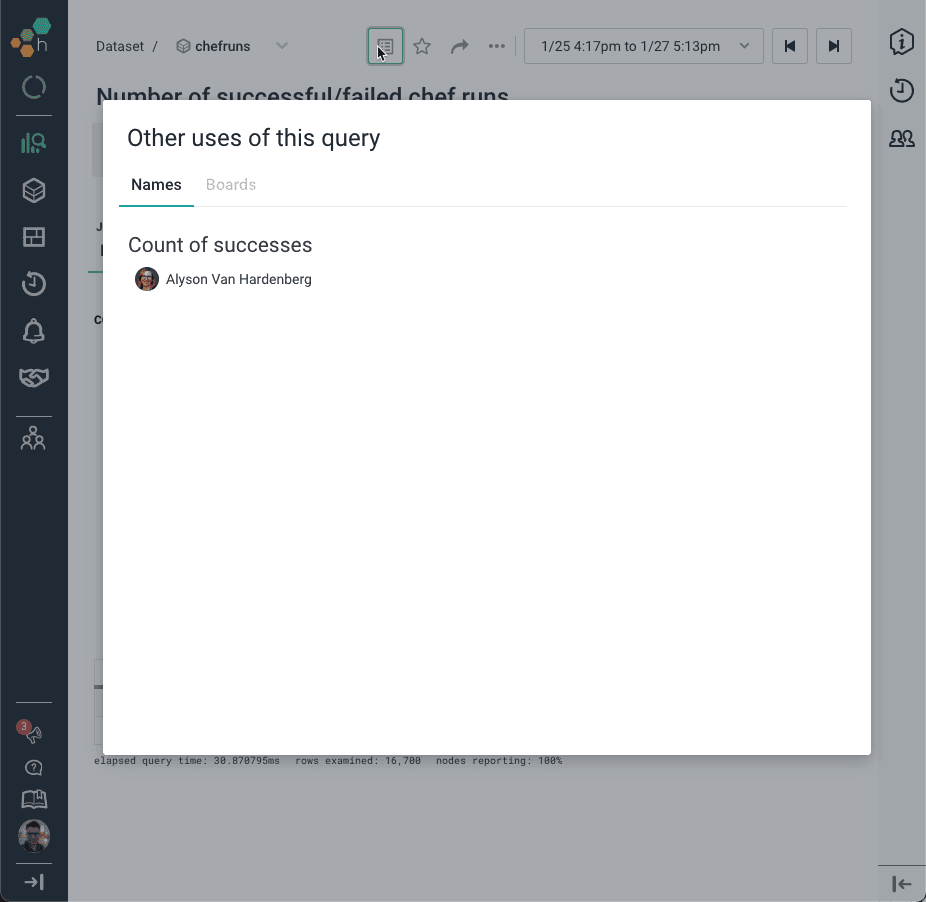Show Your Query You Love It By Naming It
Honeycomb is all about collaboration: We believe that observability is a team sport, and we want to give you as many tools to help your team get the ball down the field (i.e., untangle…

By: Danyel Fisher

Honeycomb is all about collaboration: We believe that observability is a team sport, and we want to give you as many tools to help your team get the ball down the field (i.e., untangle knotty problems) as we can. We want you to be able to share the current state of your work so that others can follow and figure out what’s up, and we want you to leave breadcrumbs so the next time you’re stuck here, you can find your way back.
This is why we decided to improve our query naming capabilities. With this update, the query naming process is smoother, cleaner, and more straightforward. The best part is this improvement makes it even easier to find queries again and share them with your team—so even if you’ve tried out naming queries and putting them on boards before, you will find these changes useful!
Improving Query Naming in Honeycomb: A Quick Tour
We like to talk about building a “shared brain,” a way for team members to know what they’re all working on and be able to easily help each other. For example, you can reach out to your teammates in Slack to discuss a problem. When you paste a query URL into Slack, it unfurls elegantly so they can see a preview of the query and the solution. It makes it really easy to say, “Here’s where I am on this investigation, what do you think?” Honeycombpermalinks last forever, even after data retention periods end, so that you can keep them for the incident review afterward.
One critical piece of the shared brain is leaving breadcrumbs behind. When you look at a query, you should be able to label it clearly to say what it is you found, how you found it, and why it’s important.
In Honeycomb, after you create a query, you can give it a name and a description.

In the history menu, you can see a list of queries that you’ve named, under my “My Saved Queries”—and a list of all the queries that your teammates have named, under “Team’s Saved Queries.” These lists help you remember things you’ve found important in the past; for instance, what was that query that figures out “perf of javascript loads”?

Now, it might turn out that a teammate may have created the same query. We’d like to make sure that each of you can see your own view of it—but wouldn’t it also be great to know that this query is a key part of someone’s boards? With the new update, if someone has stumbled into this query in the past, you’ll see an icon light up to show that the query has been named before. (It’s on the top row, next to the star.)

But Wait, There’s More!
After getting feedback from our users, we spent some time working on the ergonomics of querying and added a few other nice touches:
- When you copy URLs for sharing with your colleagues, it contains the name of the query in it. That doesn’t change the underlying query, but it makes it a lot easier to read! For example, I recently shared this URL: https://ui.honeycomb.io/prod/datasets/stuffOmitted/SpBHA/perf-of-page-load. Anyone reading that URL can pretty clearly tell it’s named “perf of page load.”
- We made it super easy to change the name of a query, so you can decide that “Count of Requests should be renamed to Total Site Traffic.
- We also made it pretty easy to change the definition of a named query. Maybe your data changed, so you renamed the field status to the more-specific http.status. Or maybe you’ve learned a little more about your data and want to add a filter (like, say, adding is-automated-test = false ).
- And, in case you needed another reason to name your queries—query names are now the titles of pages, so they show up in tabs and browser history!

Oh, and one other thing: the query doesn’t take into account the time range or the LIMIT field. COUNT over two hours and COUNT over 6 months will have the same query name. That also allowed us to fix a bug that a number of people had run into—with this update, changing the time range on a board will retain the original name. It’s a small thing, but it feels better.
Together, these features help make it easier, cleaner, and more fun to share and name queries. Got questions or feedback? We’d love to hear from you! Or if you’d like to take our new query naming for a spin yourself, sign up for a free Honeycomb account today.
Want to know more?
Talk to our team to arrange a custom demo or for help finding the right plan.